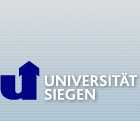
Sontech Noise Control is a industrial SME company specialized in the field of developing and selling Acoustic materials and also developing anti noise solutions to customers primarily in the OEM industry sector.
Since its start in 1987 it has grown steadily to a current annual sales of about 3 MEur The most prominent achievement is the development of the product range of Acustimet. This is a technique to make solid thin plates (metal or plastic) or foils noise absorption optimized by making the plate porous by micro-perforation, typically 100 000 holes per sqm of very tightly controlled dimensions.The advantages compared to foams or fibers are for instance less bulk porosity which prevents from liquid absorption (typically fuels) and mould growth, non burnable, high temperature resistance, mechanically robustness, easy to clean etc. In the architectural world the esthetical appearance are used in acoustical ceilings and wall components.
Key personnel
Lars Wester: acoustician with 25 years of experience of solving real life noise problems in industry.
Ralf Corin: acoustician and material specialist, founder of Sontech Noise Control and inventor of Acustimet.
Expected outcome/exploitable results and ’action plan' to get results in use
SNT’s future expertise is heavily relaying on a detailed
knowledge about sound absorption by microperforated surfaces
with flows. As a small enterprise SNT is seeking the
cooperation with highly ranked research institutions such as
KTH. The experimental data base obtained in KTH’s well equipped
laboratories within the ECOQUEST project is an essential
outcome. The direct action taken is the application in cooling
units as planned in ECOQUEST. Further actions are the
application of theengineering expertise gained through ECOQUEST
to advanced applications as for engine compartments,
ventilation silencers, exhaust mufflers, burning chambers,
engine inlet silencers, acoustical heat insulation. In addition
SNT will consider the opportunity to patent research outcomes,
in line with the IPR scheme detailed in the Consortium
Agreement, in accordance with the provisions set forth
considering joint ownership and exploitation of background and
foreground knowledge.


